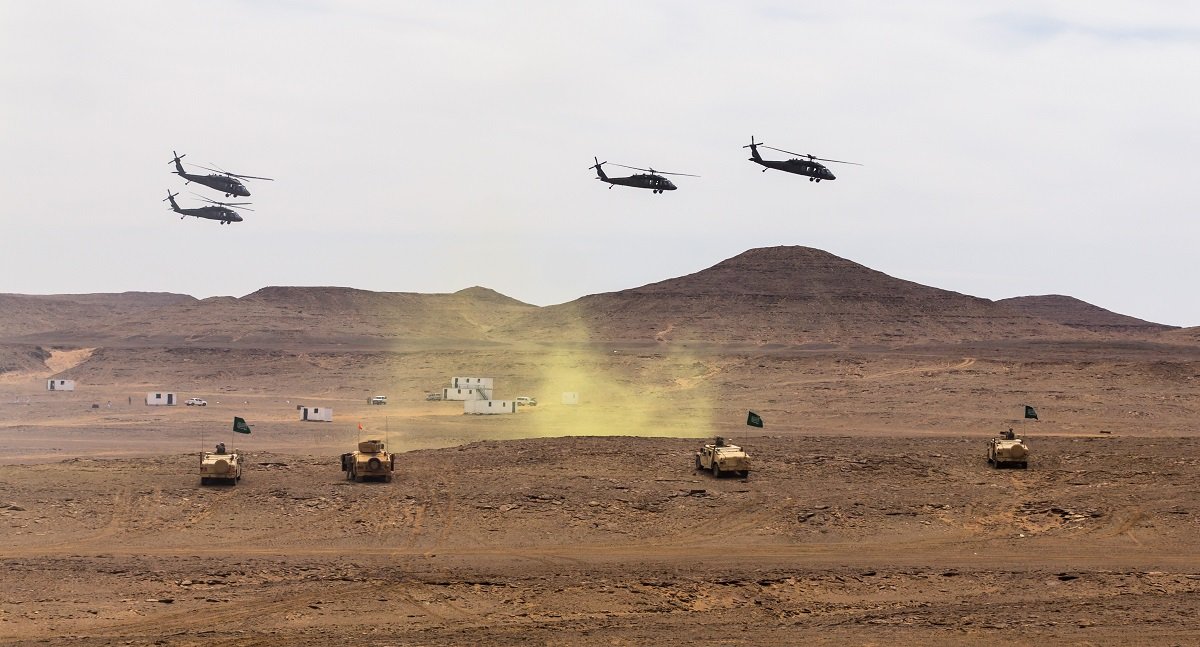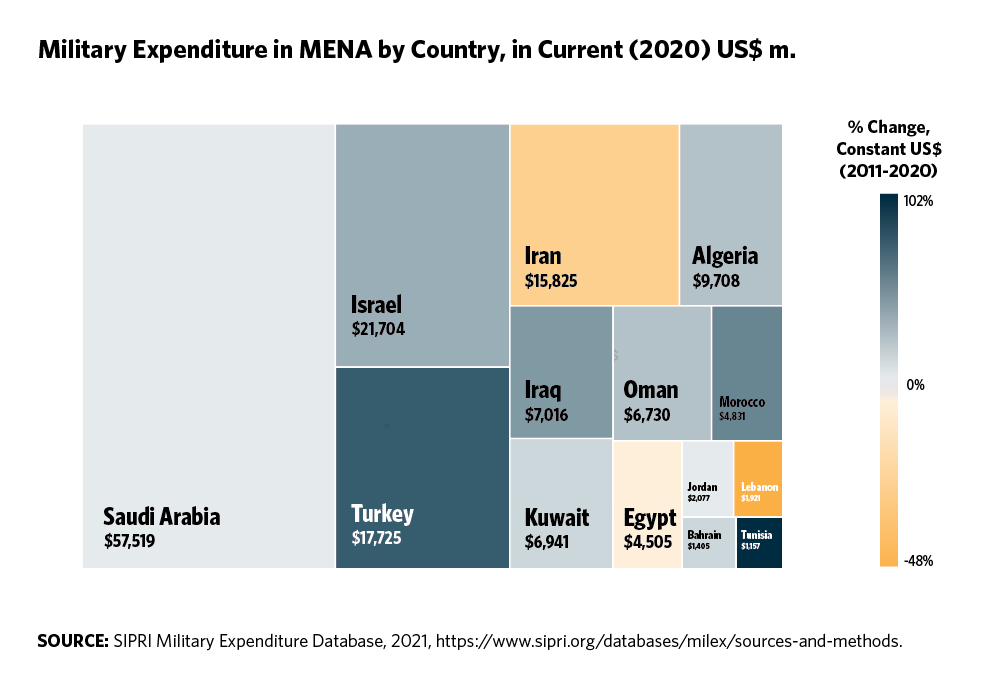

A lack of transparency in military spending in the Middle East and North Africa contributes to civil strife, corruption, and regional conflict.
New data from the April 2021 Stockholm International Peace Research Institute (SIPRI) report on trends in world military spending indicates that many states in the Middle East and North Africa (MENA) apparently continue to prioritize military activities and needs. Military expenditure as a share of GDP, also known as military burden, has remained at a high level compared with other regions. In 2020, seven MENA states were among the top ten countries with the highest military burden in the world.
This data also sheds light on significant imbalances in defense transparency in the region. While many countries provide military expenditure data, information for several states with a considerable impact on security dynamics in the region remains unavailable. Civil society groups and international organizations have discussed this issue for years, but the past decade has seen no clear improvements in the availability and accessibility of government data on military spending in several states in the region. Increasing the transparency of government-reported military spending data in these states would improve intra- and inter-state relations in the region.
A Glance at the Ten-Year Trend
Engaged in long-lasting armed conflicts, lingering tensions and rivalries, many countries in the region have invested in the modernization of their armed forces in the last decade. In 2020, four MENA states were among the twenty countries with the highest military spending in the world. Eleven countries in the region were known to have raised their military spending in real terms over the 2011–2020 period, with the biggest increases in Tunisia and Turkey, which raised their military spending by 102 percent and 77 percent, respectively. The lowest relative increase was made by the largest military spender in the region, Saudi Arabia, whose 2020 military spending was 2.3 percent higher than in 2011, an inflation-adjusted increase of $1.2 billion.
For many years the military burden of several countries has remained at a very high level compared to the world average, demonstrating the importance regional states place on military capabilities. For example, Oman’s military expenditures as a share of GDP averaged 10.2 percent between 2011 and 2020, while the global average was about 2 percent. Algeria, the largest military spender in North Africa, devoted an average of 5.6 percent of GDP to military expenditures over the last decade. In 2020, military burdens in twelve regional states were higher than the global average of 2.4 percent. Overall, the average military burden of countries in the Middle East and North Africa was 4.8 percent of GDP in 2020.
Lack and (Un)availability of Data
To estimate the amount of economic resources devoted to military activities, SIPRI collects government documents, including data on budgeted or actual expenditures. Official military spending figures are publicly available for most MENA countries, but some government reports lack comprehensiveness and transparency. For example, Algeria's publicly available official budget documents do not provide disaggregated data on military spending. Instead, spending is shown as a single figure in the budget. In the case of Egypt, despite the availability and accessibility of data, the official military budget appears to omit information on certain military activities and needs, including arms acquisitions. In some instances, government transparency in military spending is almost non-existent, as in Qatar, the United Arab Emirates (UAE), Libya, Syria, and Yemen.
Almost all of these countries release financial budget documents. However, they do not always publicly disclose budget allocations for the military. For example, Qatar only released budget figures for the defense and security sector at the end of 2020, the first time it has done so since 2010. Similarly, no comprehensive information on the UAE’s total military spending has been available since 2014. A number of factors—including involvement in major regional armed conflicts, ongoing arms procurement programs, and investments in domestic arms production—indicate an upward trend in military spending levels in these two states in recent years. However, no official reports confirm this. No military budgets have been found for Libya or Yemen since 2014, and Syria’s military budget has remained undisclosed for several years.
Lack of transparency in military spending increases the risk of misusing public resources and often leads to the creation of an enabling environment for corruption. In this regard, greater transparency is particularly important for MENA states, most of which fell into the highest risk category for corruption in the defense and security sector. Government transparency in military spending enables governments and civil society groups to engage in informed discussion on the efficient allocation of resources. Improving transparency in military spending is also an important step towards enacting confidence- and security-building measures to build mutual trust and avoid the suspicion and speculation about military buildups that lengthens already long-running regional conflicts.
Alexandra Kuimova is a researcher with the SIPRI Arms and Military Expenditure Program. Her research examines arms transfers, military spending, and defense policy in the Middle East and North Africa, as well as in Russia and Eastern Europe. The views represented are those of the author and do not necessarily reflect the views of SIPRI.



